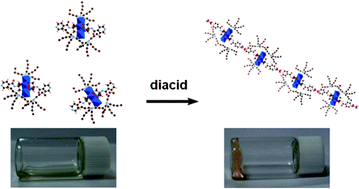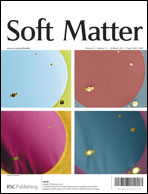Instantaneous and reversible gelation of organically grafted polyoxometalate complexes with dicarboxylic acids†
Abstract
An organically pyridyl-grafted Anderson-type POM complex (TBA–Py–MnMo6) bearing counterions of tetrabutylammonium (TBA) was found to form supramolecular gels instantaneously through


 Please wait while we load your content...
Please wait while we load your content...